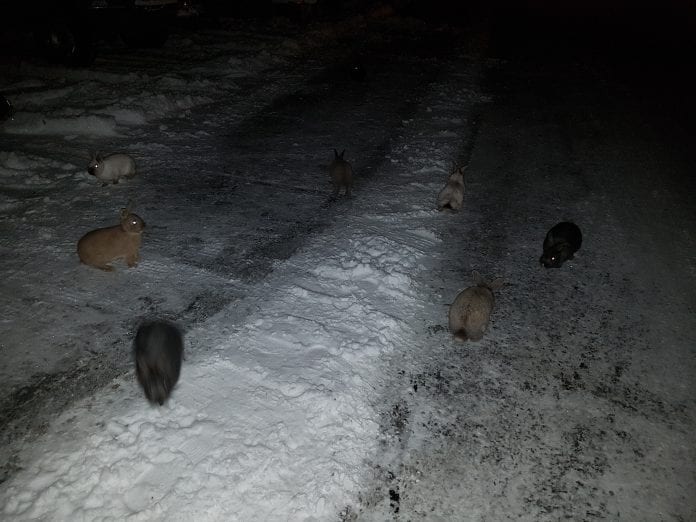
Over the last few weeks, I received my first reports of feral rabbits in Cordova.
Some of you may be thinking, “What’s the big deal?” Others are thinking, “Oh no, this is a big deal!”
I thought I’d spend some time explaining why feral rabbits are a big deal and what you can do about it. Feral cats are a big deal too, but that’s for a different article.
Most feral animal introductions happen because people decide they don’t want a pet, a pet escapes, or they just decide that the animal would be “happier outside.”
Watching bunnies hop around your yard, may seem cute and innocuous. The problem is, they breed like … well, rabbits.
While two rabbits are cute, hundreds of them eating your landscaping and pooping in your crawl space (and your neighbor’s, who had nothing to do with it) is not.
Aside from rabbits taking over the place, there are some other concerns that come with their presence. Rabbits can be affected by a disease called Tularemia. I won’t get into the nitty-gritty even though I find it fascinating. The take away message is that it is a disease that can sicken or kill anything that eats a sick rabbit, including dogs or people.
If rabbits were released out the road, it could lead to a Tularemia outbreak in our snowshoe hare population by increasing the disease’s prevalence in the area.
Another impact involves predators. When predators, in this case, bald eagles, are given a new food source it can increase their overall abundance. Aggressive measures have been and are being taken to improve Dusky Canada Goose numbers. Increasing the number of predators would not advance this objective. If a feral rabbit population became established in town, it could lead to a coyote population in town, which has its own set of problems.
You may be thinking “deer and moose were introduced and it all worked out fine,” but that is a very different situation. Deer and moose naturally existed in nearby parts of Alaska and were prevented from becoming established by geographic barriers, predominantly glaciers. When those barriers went away, the habitat was available to them. Humans simply accelerated a natural process.
Feral rabbits however, are a European variety, not like our hares that naturally exist in Alaska. They were brought here and cannot survive normal winter conditions without man-made structures. During mild winters, they could potentially survive on the delta and compete with our native snowshoe hare population for habitat and could impact predator abundance for many native species.
Here are some things that can help:
Never release a pet into the wild. It is illegal and never a good idea.
Report rabbit sightings to ADFG at 907-424-3215
Do not feed feral rabbits.
If you harvest a feral rabbit using a pellet gun, BB gun or trap (on your private property) use proper handling (gloves) and cook sufficiently. As a non-native deleterious animal, there is no closed season and no bag limit.
Charlotte Westing is the Prince William Sound area wildlife biologist for the Alaska Department of Fish and Game.














